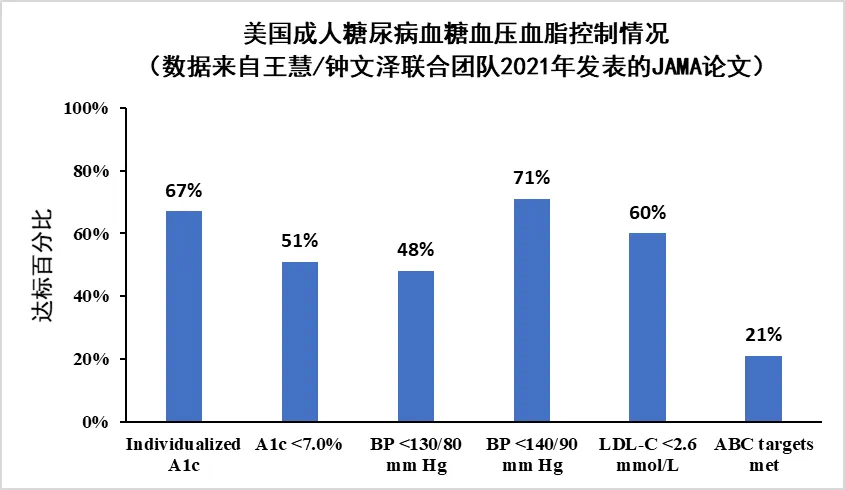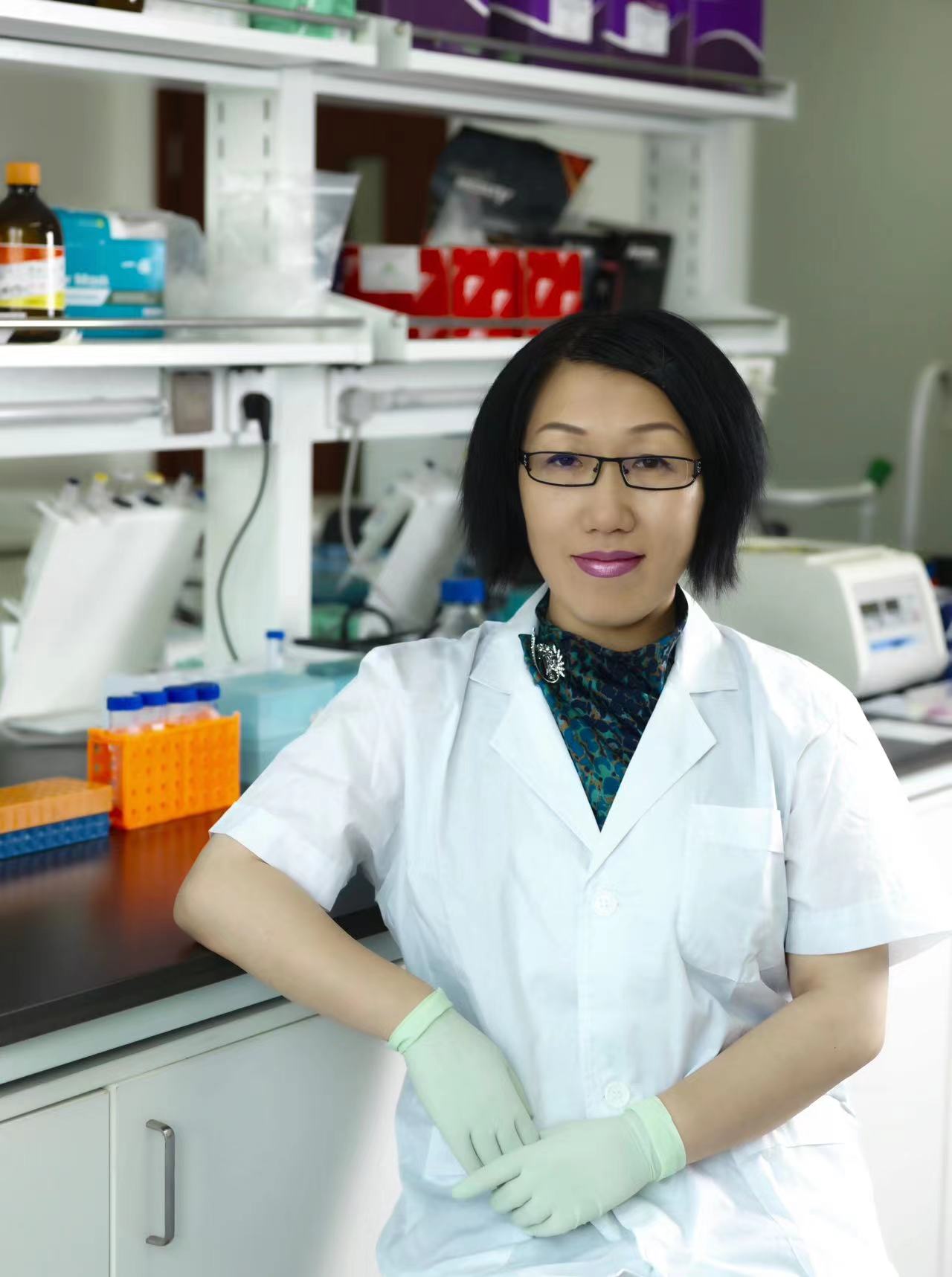The medical school of Jiaotong University and the Chinese disease control team jointly released results: the current situation of adult diabetes control in China is not optimistic about prevention and control | diabetes | achievements
Diabetes is the fastest growing disease among the global high incidence chronic diseases, and is one of the main causes of cardiovascular disease, blindness, renal failure, amputation and other major diseases. At present, there are 540 million adult patients with diabetes in the world, and China accounts for a quarter of them, which is the largest country of diabetes. According to statistics, there are nearly 140 million adult diabetes patients in China, and the annual medical expenditure is more than 1 trillion yuan. diabetes has become a major public health problem that seriously endangers the national health and brings heavy economic burden to the society. The prevention and control work is imminent.
However, the huge public health and medical investment and the advent of a series of new diabetes drugs have not brought about a significant improvement in the control of diabetes. Many studies have shown that the control of blood sugar, blood pressure and blood lipids in diabetes patients in many countries around the world is not ideal. However, China, as the world's largest country in diabetes, has not yet been systematically studied on the control of risk factors for diabetes patients.

Based on the severe situation of global diabetes prevention and control, the national key research and development program of the Ministry of Science and Technology led by Professor Wang Hui of the School of Public Health of Shanghai Jiaotong University focuses on "digital active health and chronic disease prevention and control", forms a joint research team of "active health and diabetes prevention and control", conducts health big data mining and disease risk assessment from a global perspective, and assists artificial intelligence technology to provide digital support for multi-dimensional intervention and accurate health management of diabetes population, such as diet, drugs, lifestyle, etc. After the joint team of Wang Hui and Zhong Wenze from the School of Public Health published a JAMA paper in 2021, which revealed that the cardiovascular risk factors of the American adult diabetes population were poorly controlled, they cooperated with the team of Ding Gangqiang/Yu Dongmei from the Institute of Nutrition and Health of the Chinese Center for Disease Control and Prevention, and used the national health and nutrition monitoring data from 2015 to 2017 to analyze the BMI, blood sugar, blood pressure, blood lipids, lifestyle and diet compliance of 8401 nationally representative adult diabetes patients who had been diagnosed. The diet data came from 3531 patients who participated in the 24-hour diet review method for three consecutive days. The paper was published on August 1, 2023 in the top international journal of internal medicine, the Annals of Internal Medicine, filling the gap in China's lack of systematic research on the control of risk factors in diabetes patients.
This study found that the control of risk factors of most Chinese patients with diabetes did not reach the level recommended in the Chinese Guidelines for the Prevention and Treatment of Type 2 diabetes. Only one-third of patients have a BMI controlled below the normal value of 24; Only 4.4% of patients achieved individualized blood glucose, blood pressure, and individualized lipid levels simultaneously, with particularly low rates of blood pressure and lipid levels reaching only 22.2% and 23.9%, respectively. In terms of lifestyle, 1/4 of patients still smoke, 1/3 of patients drink alcohol, 1/2 of patients do not meet the standard for sleep time, 4/5 of patients do not meet the standard for leisure time exercise, and the overall compliance rate for lifestyle is only 5.1%. In terms of diet, the standard level of indicators is the lowest, and the energy supply ratio of carbohydrates, proteins, and fats for most patients is not up to standard. Only 9% of patients have sodium intake up to standard, and 2.5% of patients have dietary fiber intake up to standard. Out of 3531 patients with dietary data, only 4 patients met the dietary recommendations in the guidelines. In addition, there are subgroup differences in the achievement rates of the above indicators, and significant differences exist among patients of different ages, genders, urban and rural areas, education levels, and BMI. To sum up, the current situation of risk prevention and control of diabetes in China is not optimistic.

This study comprehensively revealed the overall situation of risk factor control of diabetes patients in China for the first time. It is urgent to further analyze the reasons for poor risk factor control of diabetes patients and develop effective coping strategies as soon as possible. The article points out that effective control of diabetes requires timely drug and non drug comprehensive treatment for patients through personalized management. If it is necessary not only to clearly inform patients of their clinical treatment methods, guide their scientific and healthy diet and lifestyle, but also to provide patients with corresponding knowledge, skills, tools and scientific and technological means to assist them with treatment. In addition, it is necessary to understand the treatment goals and needs of each patient, as well as the main obstacles during the treatment process, and promptly help patients solve these obstacles. Finally, the formulation and implementation of medical insurance policies also need to be timely adjusted and improved according to the current situation of diabetes prevention and control in China, so as to better protect the health rights and interests of diabetes patients.
The research team will make use of its advantages in nutrition, epidemiology, public health basic research and transformation research, medical informatics, bioinformatics, artificial intelligence and other aspects, and rely on the "digital active health and chronic disease prevention and control" work of the School of Public Health to carry out a series of multi-dimensional and multi-level research on diabetes and cardiovascular diseases among Chinese people, and propose accurate prevention and health management solutions suitable for Chinese people. At the same time, it also makes full use of the team's international background to carry out high-level and influential international research, providing original achievements and theoretical basis for the global prevention and control of high incidence chronic diseases such as diabetes, cardiovascular and cerebrovascular diseases.

This study was first authored and corresponding authored by the School of Public Health at Shanghai Jiao Tong University, and co first authored and corresponding authored by the Institute of Nutrition and Health at the Chinese Center for Disease Control and Prevention. The first authors were Zhong Wenze and Yu Dongmei, and the corresponding authors were Wang Hui and Ding Gangqiang. The funding for this research project comes from the National Key Research and Development Program, the National Natural Science Foundation of China, the National Health Commission, the Shanghai Education Commission, and the Shanghai Education Development Foundation.




